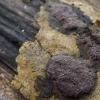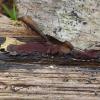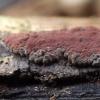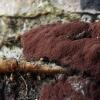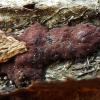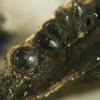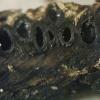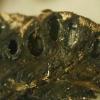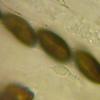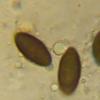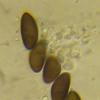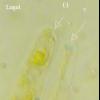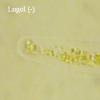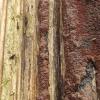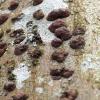
30-07-2025 20:52
Bohan JiaHi together, I've been looking posts in AscoFra

30-07-2025 10:12
 Bernard CLESSE
Bernard CLESSE
Bonjour à toutes et tous,Pourriez-vous m'aider à

31-07-2025 16:32
 Andreas Gminder
Andreas Gminder
Dear collegues,today I found on a very fresh fire

30-07-2025 18:06
Stefan JakobssonOn a decorticated twig of Alnus incana on moist so

13-06-2025 09:41
Hello.A cerebriform ascomycete sprouting scattered

13-06-2025 16:34
 Andgelo Mombert
Andgelo Mombert
Bonjour,Un petit discomycète qui me résiste. Il
Hypoxylon on Carpinus?
Mirek Gryc,
30-03-2020 20:45
Hi.
I found two Hypoxylon collections growing on Carpinus yesterday. The shape of the sporocarps varies but I suspect it is the same species. So far, I've only microscoped the first one.
The keys contained in the work "New species of Hypoxylon from western Europe and Ethiopia" lead me to the Hypoxylon commutatum. I compared the features of my sporocarps to all species found on Carpinus, but none match mine.
Description for Hypoxylon commutatum is quite scanty but only in it I did not find any features that would exclude this species.
The reaction of porus in my collection was very capricious. Only a few ascus have a slight bluish discoloration of porus. Over 95% of ascus do not show reaction to iodine. In no mature ascus I have not observed a reaction.
Spores in my collection slightly larger than those listed on the page:
http://pyrenomycetes.free.fr/hypoxylon/html/Hypoxylon_commutatum.htm
In the original description, however, in "Pyrenomycetes germanici" they give slightly larger ones that perfectly match the size of the spores in my collection.
Perhaps I have not reached all species that occur on Carpinus so I am asking you for help.
The keys contained in the work "New species of Hypoxylon from western Europe and Ethiopia" lead me to the Hypoxylon commutatum. I compared the features of my sporocarps to all species found on Carpinus, but none match mine.
Description for Hypoxylon commutatum is quite scanty but only in it I did not find any features that would exclude this species.
The reaction of porus in my collection was very capricious. Only a few ascus have a slight bluish discoloration of porus. Over 95% of ascus do not show reaction to iodine. In no mature ascus I have not observed a reaction.
Spores in my collection slightly larger than those listed on the page:
http://pyrenomycetes.free.fr/hypoxylon/html/Hypoxylon_commutatum.htm
In the original description, however, in "Pyrenomycetes germanici" they give slightly larger ones that perfectly match the size of the spores in my collection.
Perhaps I have not reached all species that occur on Carpinus so I am asking you for help.
Spores:
(10.9) 11.3 - 12.1 (12.5) × (4.8) 5 - 5.5 (6) µm
Q = (2) 2.1 - 2.3 (2.6) ; N = 15
Me = 11.7 × 5.3 µm ; Qe = 2.2
Q = (2) 2.1 - 2.3 (2.6) ; N = 15
Me = 11.7 × 5.3 µm ; Qe = 2.2
10.92 4.75
11.55 5.51
11.27 4.98
11.73 4.99
12.02 5.44
12.50 4.81
11.74 5.08
12.10 5.43
12.44 5.05
11.53 5.51
11.60 5.07
11.80 6.00
11.21 5.45
11.61 5.51
11.79 5.50
11.55 5.51
11.27 4.98
11.73 4.99
12.02 5.44
12.50 4.81
11.74 5.08
12.10 5.43
12.44 5.05
11.53 5.51
11.60 5.07
11.80 6.00
11.21 5.45
11.61 5.51
11.79 5.50
Thank you in advance.
Mirek
